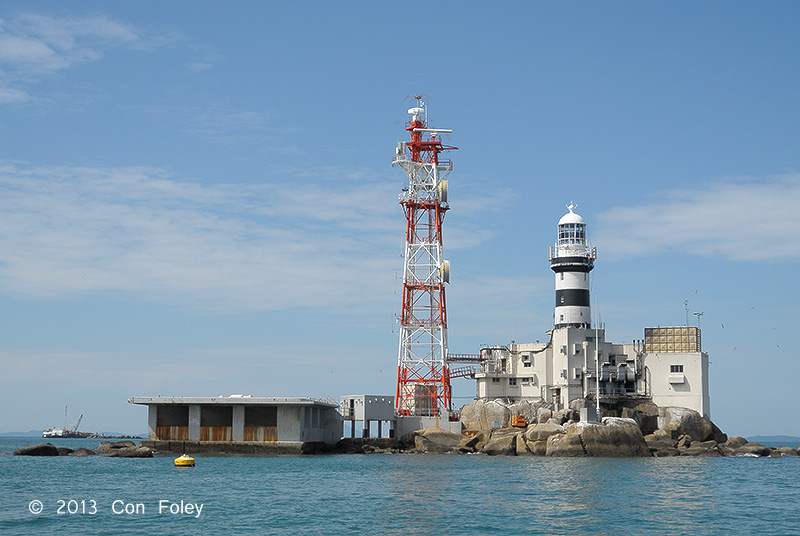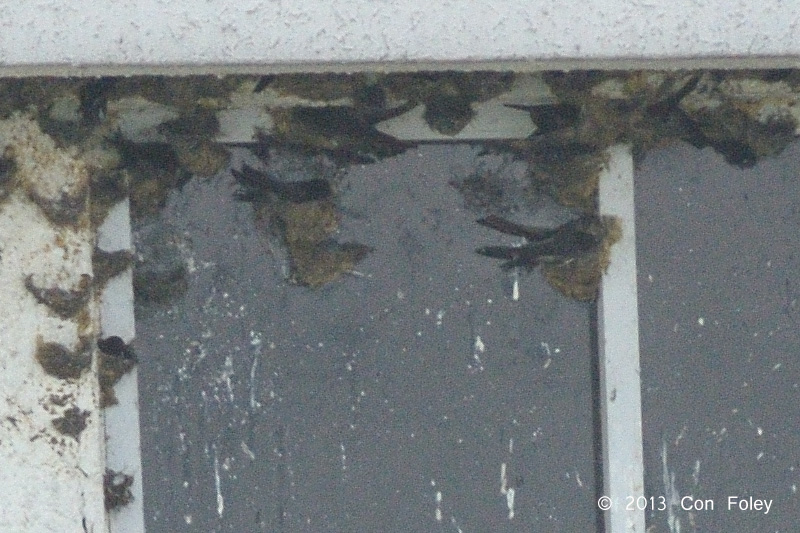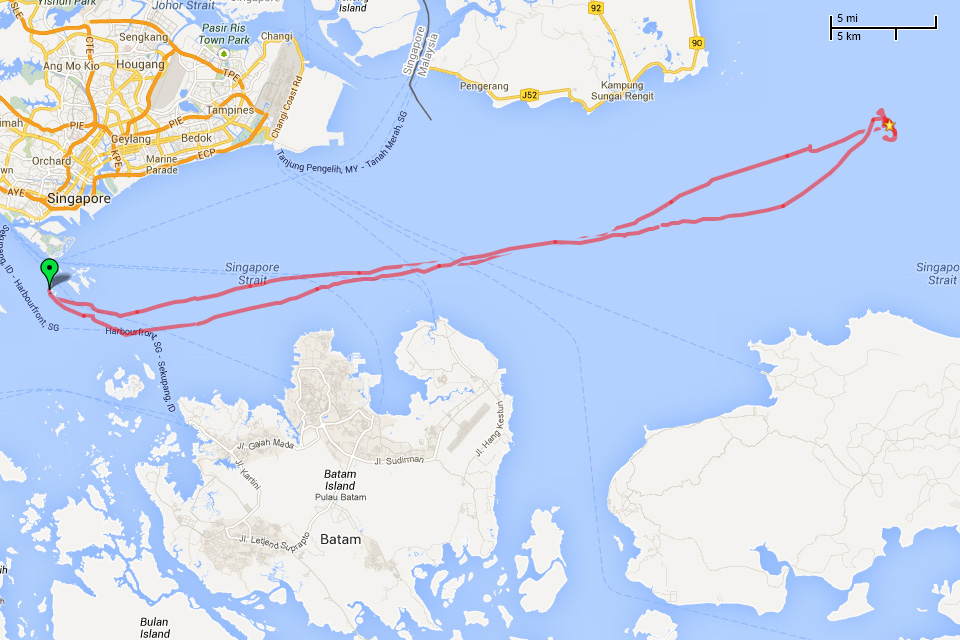On July 28th we set out on another pelagic expedition, this one kindly sponsored by NParks as part of the comprehensive marine biodiversity survey.
It was really a glorious morning, and the weather proved to be fair all day, and the sea very calm.
One of the first sights was the ship, Athens Warrior and the rising sun. One of many types of vessels in the Straits of Singapore, the Athens Warrior is a crude oil tanker owned in Greece, but flagged in Liberia.
Our destination was Horsburg Lighthouse, and we made very good time, arriving by 10:30 am. Enroute though there had been very few birds, a few Bridled Terns, swallows and swiftlets. Even the cable buoy off the coast of Batam had no terns perched, and this buoy is usually filled with crested terns. Our mission at Horsburgh was to investigate the Bridled Tern colony, and also see the colony of Black-nest Swiftlets that Geoff had discovered on his solo trip last year.
What Geoff had discovered is that under the eaves of many of the windows and window ledges, Black-nest Swiftlets were nesting. Why we had not noticed this in our several prior trips is a great question.
Although our boat was some distance from the lighthouse zooming in to maximum magnification, it is readily evident that the colony is indeed nesting. This is significant as the surest method of field ID for this species is to see the bird on the nest which separates it readily from the confusion species as the nests are unique to each species, while the birds look virtually the same. This then was a solid tick for a number of us.
Some more nesting swiftlets.
The Bridled Tern colony was a mixed flock of post breeding adults and juveniles. Altogether around 100 Bridled Terns were there. We noticed perhaps 20 of them diving and wheeling after a large moth. They were not trying to catch the moth, they were just cavorting all around it. Probably a rare occurence for these terns to encounter a large moth.
On closer evamination the moth is seen to be an Atlas Moth (Attacus atlas) one of the largest moths in the world.
After a number of circuits around Horsburgh we moved over to Middle Rocks which are owned by Malaysia. Notice that you can see Horsburgh in the background. Here we observed construction activity, something is being built on Middle Rocks. We sure don’t know what it’s going to be but we hope it’s a seafood restaurant so on our next trip we can have a nice tasty lunch 🙂
After a couple of uneventful hours at Horsburgh, dipping on our hoped for frigatebirds or other exotic species, we started the long journey back. At least the Straits provides many different vessels to observe. Below is the RSS Brave a Singapore patrol vessel.
Then we noticed a rather old wooden boat fitted with a big engine really making headway. We wondered what he was carrying?
As we neared the Singapore harbour we encountered an Indonesian fishing boat outfitted with many lights for fishing at night.
Here is the route taken from the immigration checkpoint until our return, we logged just over 150 kilometers in 10 hours of sailing.
While waiting our turn at the immigration checkpoint we observed a Japanese research vessile, the Hakuho Maru also clearing immigration. Our suspicions about the nature of the craft were unfounded, it truly is a deep sea research vessel.
And finally we are back on dry land, with perhaps a bit of an overdose of sun. Altogether we had seen about 100 Bridled Terns at Horsburgh, still at their colony. Enroute about another 50 Bridled Terns migrating East, most likely an early wave of migration that will build in numbers over the next two months. We had seen no exotic species and no dolphins and only one crested tern. But still we did learn something about when Bridled Tern migration begins, and we got to see the colony of Black-nest Swiftlets.















